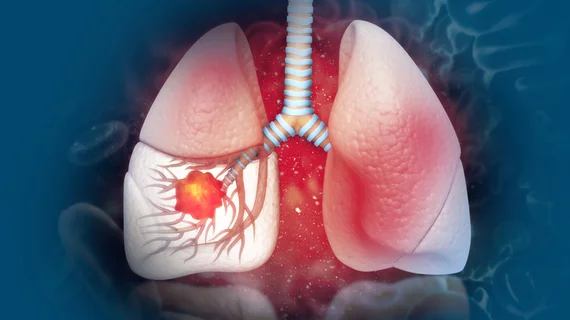AI predicts cancer risk from lung screening CTs, clinical data without radiologist assistance
A new model combining lung screening CT information with clinical data can better predict lung cancer without required manual reading, according to recently published research.
The deep learning tool integrates CT features such as nodule size and risk factors including age, pack-years smoked, cancer history, and more. Developed and tested on exams from more than 23,000 patients, the co-learning model outperformed risk models utilizing clinical or imaging data alone, including the popular Brock model.
Riqiang Gao, a PhD student in computer science at Vanderbilt University, and colleagues believe their co-learning approach may be particularly helpful as more patients begin to qualify for screening exams.
“Risk estimation among lung screening participants will become even more important with the impending expansion of screening guidelines to include those patients who are considered lower risk only based on age and history of tobacco use,” Gao et al. explained, adding that insights from their tool may find low-risk individuals are actually high-risk.
The team applied a five-fold cross-validation approach to data from the National Lung Screening Trial (23,505 patients) to develop their deep learning tool. Screening data from nearly 150 patients participating in an in-house program were used for external testing.
Deep learning notched an area under the receiver operating characteristic curve score of 0.88, better than published models relying solely on imaging data (0.86) and clinical risk factors (0.69).
A top benefit of this system is that it automatically pulls high-risk regions from CT exams without requiring radiologist effort. At the same time, Gao and co-authors noted that collecting clinical data still requires manual effort on behalf of rads and other physicians.
“The role of [the] radiologist is still irreplaceable in terms of looking for and reporting clinically significant findings (emphysema, pulmonary fibrosis, atelectasis, etc.),” the authors concluded.
The full report was published Oct. 13 in Radiology: Artificial Intelligence.

